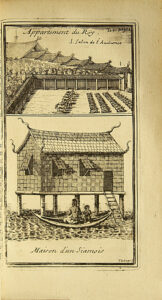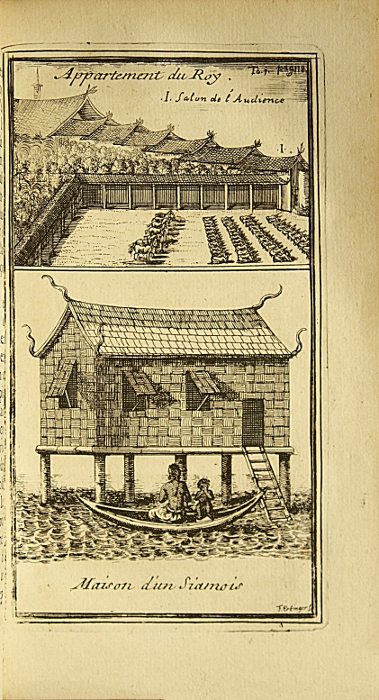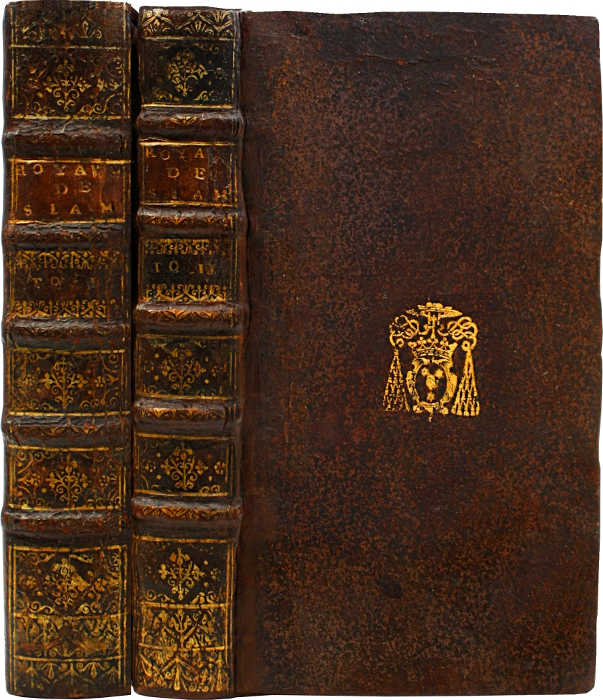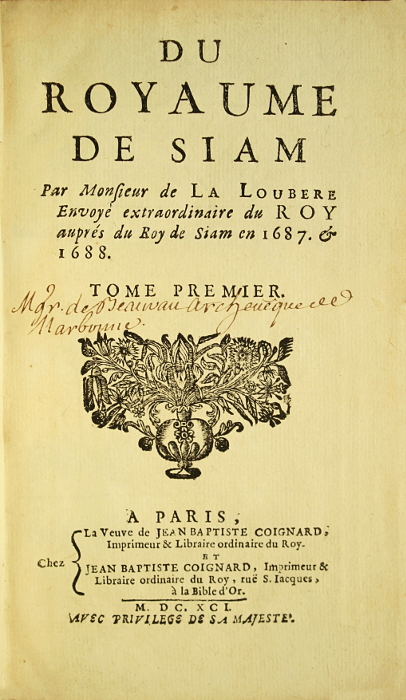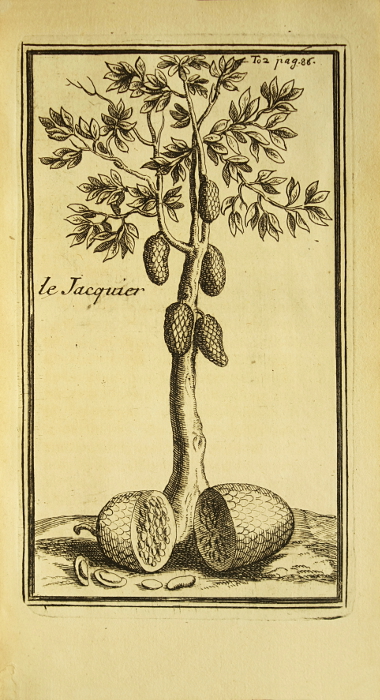Paris, Veuve de Jên-Baptiste Coignard et Jên-Baptiste Coignard, 1691.
2 12mo [165 x 94 mm] of: I/ (7) ll., 555 pp., (4) pp. of privilege, 25 plates and engraved maps out of pagination, (2) ll. of explanations; II/ (2) ll., 404 pp., (2) ll., 15 plates out of pagination. Small têr without loss to the 1st pl. of the 1st volume. Brown calf, golden arms on the center of the covers, spine ribbed and gilt fleurons, brown morocco lettering piece, mottled edges. Contemporary binding.
Extremely rare, first edition of the best work about Thailand published in the 17th century. Cordier, Bibliotheca Indosinica, 722; Chadenat n°345.
Born in Toulouse in 1642, Simon de la Loubère spent his childhood with his father passionate about literature. He went to Paris, wrote gallant poetry, studied law and became the secretary of the Swiss ambassador, Mr. de Saint Romain. Little time after, Louis XIV who was willing to restore business relations with the Siam Empire and introduce Christianity, he sent La Loubère with the title of extraordinary envoy. Gone from Brest on March 1st 1687, La Loubère rêched his destination on September 27th and stayed in the country until January 3rd 1688.
Therefore La Loubère only spent three months in Siam, but the relations he has published of his travel revêled a judicious and accurate observer. “His information on the origin, the customs, the institutions, the religion, the government, the industry and the Siamese trade have been confirmed by later relations.” Hoffer.
The very interesting illustration includes 2 large engraved folding maps out of pagination and 38 full page plates, many of them on double page. The work opens with an engraving representing the “the house made especially for the King’s envoys”. The set of engravings illustrate the Siamese customs, their customs, their residences, their boats, their trees, fruits, shellfish, music instruments, alphabets, and songs.
With regard to the boxing art or massages, costumes, the use of parasol, puppets, the jackfruit tree or calculation, it looks like he doesn’t miss a thing. He is the first Western man to mention Pali, the language of Theravada, of which he is also the first the present the foundation without deforming it. In this book, which includes an important section on mathematics, La Loubère also introduces for the first time in the French language the wording “magic square”.
A precious copy preserved in its contemporary binding with the arms of Charles Le Goux de La Berchère (1647-1719). Extremely rare in this condition. Born into an old Burgundian family, Charles Le Goux de La Berchère is the son of Le Goux de La Berchère, first president of the Parliament of Dijon, the president of the Parliament of Grenoble, and of Louise Joly de Blaisy. He studied theology and was accepted as Doctor at La Sorbonne. He became King Louis XIV’s chaplain; he followed him during the Flanders’ campaign. In 1685, the king placed him as archbishop of Aix and then Albi in 1687, then in Narbonne in 1703. Charles Le Goux de La Berchère was also known as an erudite for its grêt and sumptuous collection. “We can acknowledge the taste of this chaplain for literature thanks to the size and the precious collection he had carefully gathered with infinite expenses: it deserves to be mentioned as among the grêt French collections…” (Petite revue des bibliophiles dauphinois, II, p. 80).
Besides this collection was object of desire as soon as the chaplain passed away; indeed, despite the fact that the decêsed archbishop left his collection to the college of Jesuits of Toulouse according to his will, Mr. René-François de Bêuvau, his successor as archbishop of Narbonne, wanted to enjoy it. After a long law suit the major part of its collection went to Mr. de Bêuvêu who marked his right of property by adding the following handwritten mention in êch volume: “Mgr. de Bêuvau, archevêque de Narbonne”.
Provenance: Charles Le Goux de La Berchère (arms) then Mgr de Bêuvau Archevêque de Narbonne (handwritten ex libris on the title lêves).
